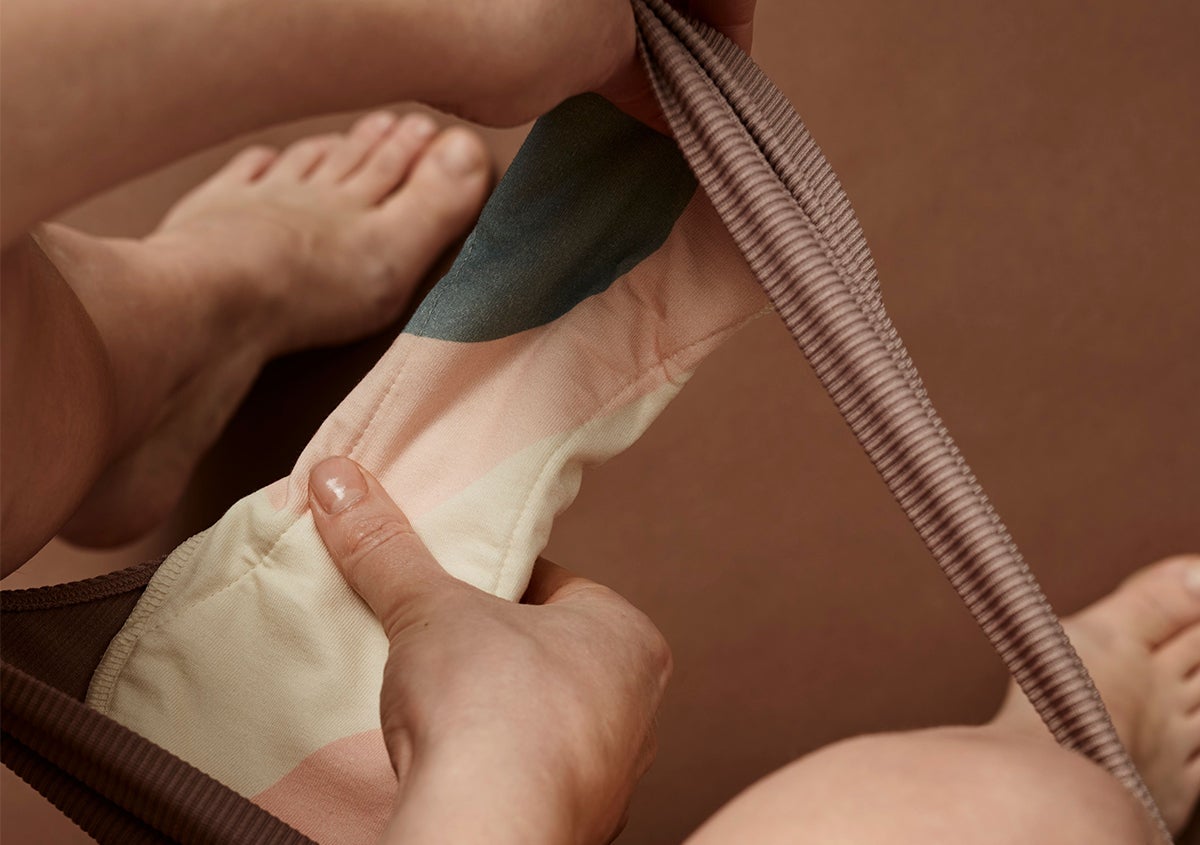How does Reusable Sanitary Pads work?
Our reusable sanitary pads are a soft and natural menstrual protection that allows the genitals to breathe and creates a fresh feeling during menstruation. They are thin, flexible, and stay in place, providing security. Many women have gratefully reported being relieved from issues such as itching and vaginal yeast infections when they switched from disposable pads to reusable sanitary pads.
The average menstruating person uses about 12,000 – 16,000 disposable pads or tampons in a lifetime! Reusable sanitary pads can be used over and over again, resulting in significant environmental benefits – while also saving you a lot of money.

The health benefits are as numerous as the environmental gains. By switching to reusable sanitary pads from disposable pads and tampons, you avoid all the plastics, perfumes, and chemicals that disposable products are often made of. Many who switch from disposable pads to cloth pads also get rid of itching and vaginal yeast infections, as our cloth pads are made of cotton, a material that allows the skin to breathe. Another health aspect is the good conscience! It's a wonderful boost for your conscience to know that you're helping reduce the plastic waste by reusing products instead of disposing of them after just one use.
Which reusable sanitary pad should I choose?
We offer cloth pads with three different absorption levels - lightest, medium, and high. High absorption means both more layers within the absorbent core and more coverage both in the front and back of the pads.
Panty Liners
5 ml - Equivalent to 1/2 disposable tampon/panty liner
Suitable for light menstruation, minor urinary leakage, or as a complement to tampons or menstrual cups.

Day Pads
15 ml - Equivalent to 2 disposable tampons/pads
Suitable for a moderate flow in the middle of menstruation.

Night Pads and Postpartum Pads
20 ml - Equivalent to 2-3 disposable tampons/pads
Suitable for protection during the night but also during the day for those with heavy flow.

How do the sanitary pads stay in place in the panties?
The sanitary pads is placed in the panty and easily fastened around the crotch with two snap buttons. We also have a model without buttons that is instead folded around the crotch of the panty.
How many pads do I need?
The number of sanitary pads needed for a menstrual period is difficult to answer exactly, as it varies greatly depending on how heavy the bleeding is and how long the menstrual cycle is. It also depends on the washing facilities available. If there is an opportunity to wash pads during the menstrual cycle, fewer pads are needed compared to if you only wash after the period is over. We usually recommend about 4 packs, i.e., 12 day pads, 2 packs, i.e., 6 night pads, and 2 packs, i.e., 6 panty liners. Of course, this varies depending on what suits you, your menstrual cycle, pad usage, and lifestyle.
How often do I need to change cloth pads?
How often the sanitary pad needs to be changed is individual. Many find that reusable sanitary pads need to be changed less frequently than disposable pads. One reason for this may be that the material breathes and is softer, so it often doesn't feel as stuffy and sweaty as it can with disposable pads. Many almost forget they're wearing the pad because it's as soft and airy as the panties themselves. In other words, cloth pads are changed as needed, which is individual. Just like disposable pads.
Are reusable sanitary pads as safe as disposable pads?
Cloth pads are as safe as disposable pads. Since the pads, in addition to the absorbent cotton layers, have an extra reinforcement in PUL that prevents leakage, they are as safe and reliable as disposable pads.
Do cloth pads work for urinary incontinence?
They do. Urinary incontinence is a common problem, mainly among those who have given birth, but also among others. If the pelvic floor is weak, a little urine can leak out with increased abdominal pressure, such as laughing, sneezing, coughing, or physical activity. Our pads also work well as incontinence protection, but we still advise you with urinary incontinence to seek help from healthcare for your problems. Although it is common, in many cases, weak pelvic floor muscles can be strengthened and help can be obtained for the problems. It's also important to note if you're using cloth pads as incontinence protection that you rinse out all urine since it corrodes the fabric. So, you can't let them soak in water until it's time to wash. If you don't rinse out the urine, it can corrode holes in the fabric.
See all our panty liners and reusable sanitary pads here!
